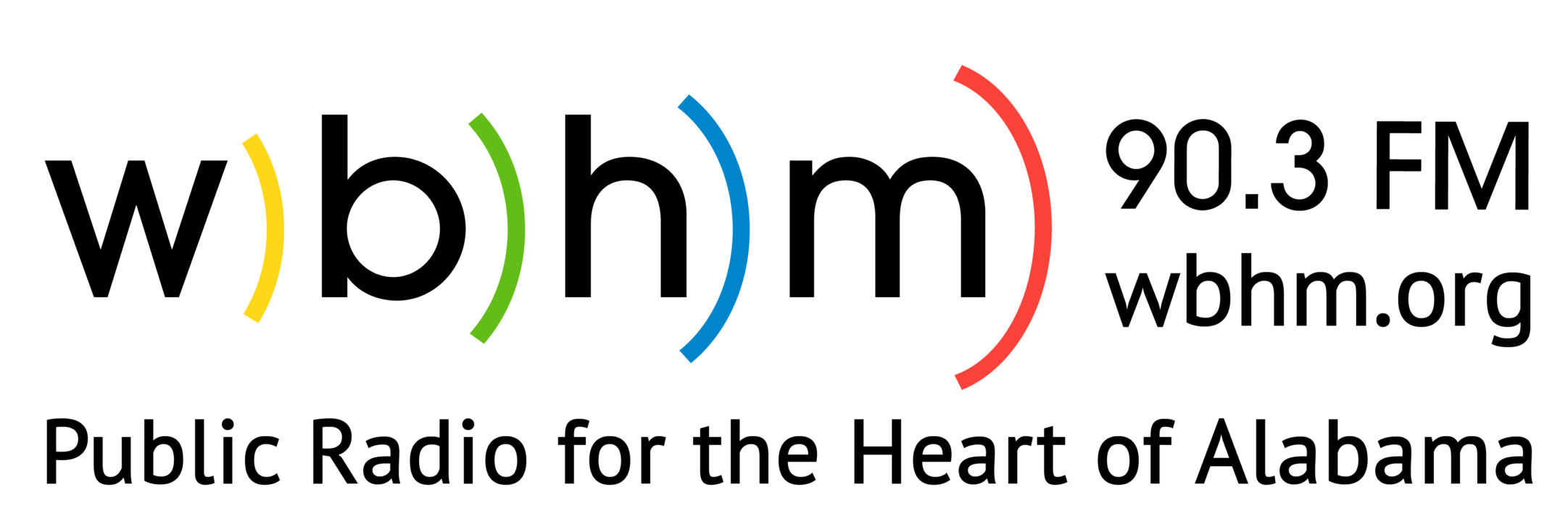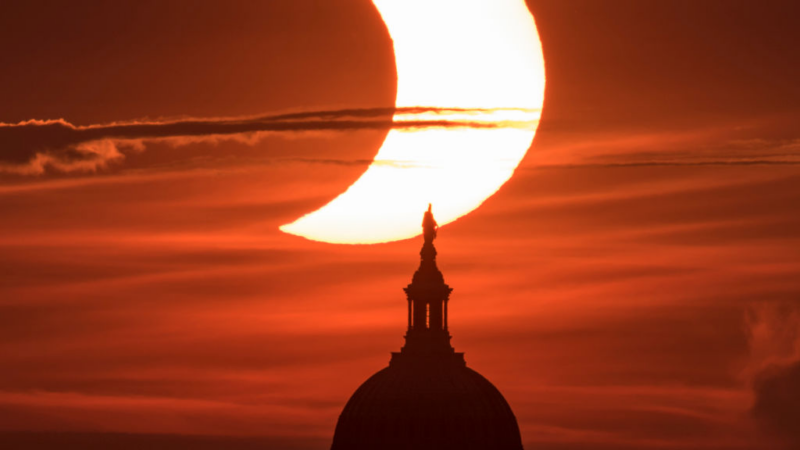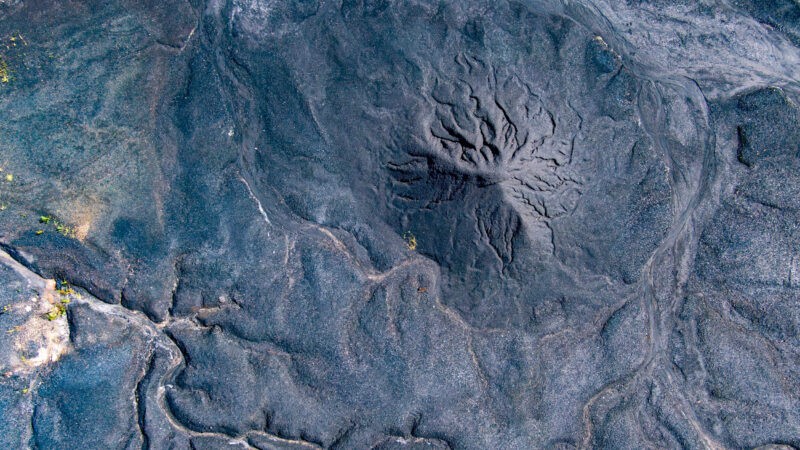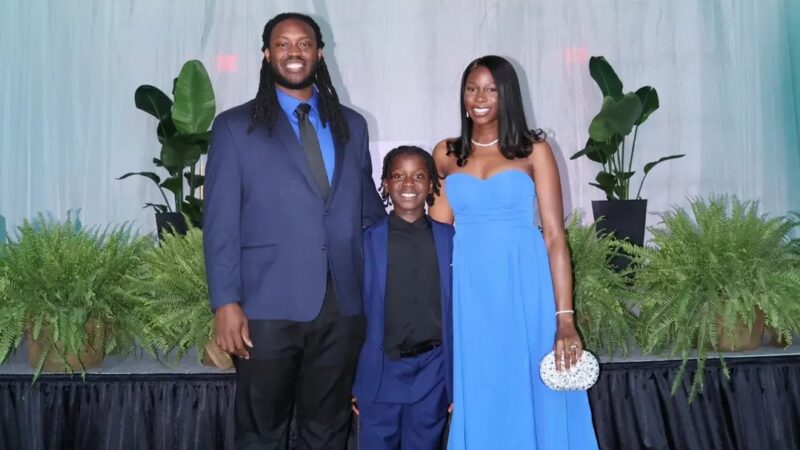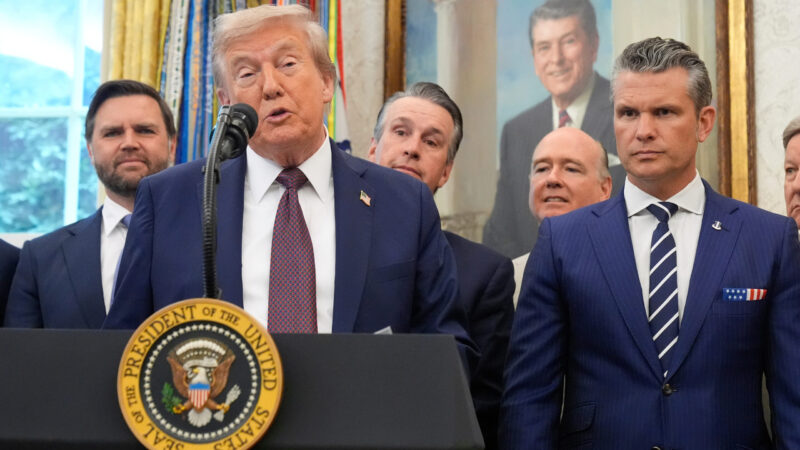Parts of America will experience a partial solar eclipse this weekend
Some Americans will experience a rare celestial treat this weekend when a partial solar eclipse occurs.
The eclipse will be visible in parts of North America on Saturday, according to NASA.
During a partial solar eclipse, the moon passes between the sun and Earth, but the celestial bodies are not perfectly aligned. As a result, only parts of the sun are obscured, causing the sun to appear as a crescent shape.
Here is what to know about the partial solar eclipse and how to see it.
Who will be able to see it?
If you live in the U.S. Northeast, have clear weather and are an early riser, you’re in luck.
The eclipse will be visible from the Washington, D.C., area up to Maine and parts of Canada and across the Atlantic Ocean to portions of Africa and Europe, according to a map from NASA.
It will begin before sunrise in the U.S. and end shortly after 7 a.m. ET. The maximum coverage for those in Washington, D.C., is expected at 6:59 a.m. ET, while Buffalo, N.Y., will experience its peak at 7:05 a.m. ET, the agency says. A partial eclipse can last between 70 and 80 minutes, depending on one’s location, according to NASA.
However, the visibility of the partial eclipse will vary based on where you live.
For instance, Washington, D.C., is expected to see only 1% coverage of the eclipse, while Portland, Maine, is predicted to see 64%.
Do I need special equipment?
If you plan to catch the eclipse, you will need to use special equipment such as eclipse glasses or handheld viewers. Both contain special filters designed to protect your eyes.
Regular sunglasses, no matter how dark, will not sufficiently protect your eyes when viewing the partial eclipse. Looking directly at the sun can cause significant eye damage, including burns and even permanent vision loss, according to the American Academy of Ophthalmology. The American Astronomical Society, on its website, provides a list of suppliers that carry safe solar eclipse glasses and handheld viewers.
If I miss it, when can I see the next solar eclipse?
If you live in the United States, you will have to wait a while for the next opportunity.
The next partial solar eclipse will take place Sept. 21 but will not be visible in the United States. An annular solar eclipse, which happens when the moon is at or close to its farthest point from Earth and passes between the sun and our planet, will occur on Feb. 17, 2026, and will also not be visible from North America. However, a total solar eclipse, during which the moon passes between the Earth and sun, completely blocking out the star, will be visible in parts of North America, including the U.S., on Aug. 12, 2026.
Auburn fires coach Hugh Freeze following 12th loss in his last 15 SEC games
The 56-year-old Freeze failed to fix Auburn’s offensive issues in three years on the Plains, scoring 24 or fewer points in 17 of his 22 league games. He also ended up on the wrong end of too many close matchups, including twice this season thanks partly to questionable calls.
In a ‘disheartening’ era, the nation’s former top mining regulator speaks out
Joe Pizarchik, who led the federal Office of Surface Mining Reclamation and Enforcement from 2009 to 2017, says Alabama’s move in the wake of a fatal 2024 home explosion increases risks to residents living atop “gassy” coal mines.
‘It’s like feeling the arms of your creator just wrapped around you’: a visit to a special healing Shabbat
Members of Temple Emanu-El in Birmingham gathered recently for their traditional Friday Shabbat service. But this particular service was different, as could be seen by all the people dressed in their finest pink.
Space Command is coming to Huntsville. What might that mean for first-time homebuyers
While Huntsville has been a more affordable market than other growing cities, what’s it been like for those looking for their first home?
Colorado says relocation of Space Command to Alabama is ‘punishment’ for mail-in voting
The litigation announced by Colorado Attorney General Phil Weiser asks a federal judge to block the move as unconstitutional.
Breaking down Alabama’s CHOOSE Act
It’s been a year since Alabama legislators passed the CHOOSE Act allowing families to apply for state funds to use towards homeschool expenses and tuition for participating private schools. The Alabama Daily News’ education reporter Trisha Powell Crain has been diving into how the funds are being used. WBHM’s Andrew Gelderman sat down with her to talk about what we’re seeing so far.
